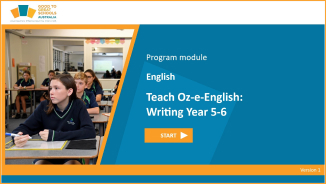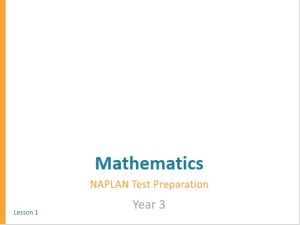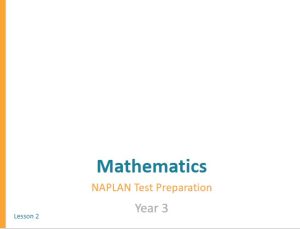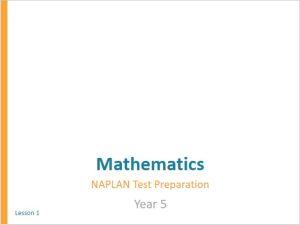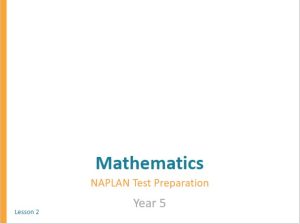Direct Instruction NAPLAN Preparation
Years 3 & 5
The Writing (History) units align to the Australian Curriculum Content Descriptions for Language and Literacy
Free Starter Lessons
Year Overview
Language
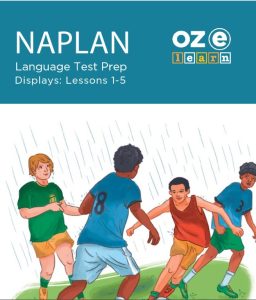
Teaching Resources
Australian Curriculum Content Descriptions
Overview
The NAPLAN Language Test Preparation is a Language program for Year 3 and Year 5 students. It aligns to the Australian Curriculum English Strand:
- Know that word contractions are a feature of informal language and that apostrophes of contraction are used to signal missing letters (ACELA1480).
- Use comprehension strategies to build literal and inferred meaning and begin to evaluate texts by drawing on a growing knowledge of context, text structures and language features (ACELY1680).
- Re-read and edit texts for meaning, appropriate structure, grammatical choices and punctuation (ACELY1683).
- Create texts that adapt language features and patterns encountered in literary texts, for example characterisation, rhyme, rhythm, mood, music, sound effects and dialogue (ACELT1791).
- Understand how the grammatical category of possessives is signalled through apostrophes and how to use apostrophes with common and proper nouns (ACELA1506).
- Identify and explain characteristic text structures and language features used in imaginative, informative and persuasive texts to meet the purpose of the text (ACELY1701).
Learning Objectives
In Lessons 1 to 15, students learn about:
- singular and plural possessives and using apostrophes
- pronouns
- capitalization of proper nouns
- combining sentences using and, or, because and but.
In addition to presenting language concepts, the test prep teaches and provides practice on the type of worksheet responses required on the NAPLAN tests.
Success Criteria
- Understand how language features are used to link and sequence ideas.
- Understand how language can be used to express feelings and opinions on topics.
- Include writing and images in texts to express and develop, in some detail, experiences, events, information, ideas and characters.
- Create a range of texts for familiar and unfamiliar audiences.
- Contribute actively to class and group discussions, asking questions, providing useful feedback and making presentations.
- Demonstrate understanding of grammar and choose vocabulary and punctuation appropriate to the purpose and context of their writing use knowledge of letter-sound relationships including consonant and vowel clusters and high-frequency words to spell words accurately.
- Re-read and edit their writing, checking their work for appropriate vocabulary, structure and meaning.
- Write using joined letters that are accurately formed and consistent in size.
Reading
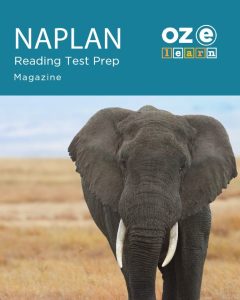
Australian Curriculum Content Descriptions
Overview
The NAPLAN Reading program is a reading program for Year 3 and Year 5 students. It aligns to the Australian Curriculum English Strand:
- Read an increasing range of different types of texts by combining contextual, semantic, grammatical and phonic knowledge, using text processing strategies, for example monitoring, predicting, confirming, rereading, reading on and self-correcting (ACELY1679).
- Use comprehension strategies to build literal and inferred meaning and begin to evaluate texts by drawing on a growing knowledge of context, text structures and language features (ACELY1680).
- Re-read and edit texts for meaning, appropriate structure, grammatical choices and punctuation (ACELY1683).
- Discuss texts in which characters, events and settings are portrayed in different ways, and speculate on the authors’ reasons (ACELT1594).
- Discuss how language is used to describe the settings in texts, and explore how the settings shape the events and influence the mood of the narrative (ACELT1599).
Learning Objectives
In Lessons 1 to 15, students learn about:
- a strategy for how to answer multiple-choice items
- comprehension strategies
- different types of texts
- constructed responses
- sequencing items.
Success Criteria
- Understand how language can be used to express feelings and opinions on topics.
- Contribute actively to class and group discussions, asking questions, providing useful feedback and making presentations.
- Use knowledge of letter-sound relationships including consonant and vowel clusters and high-frequency words to spell words accurately.
Spelling
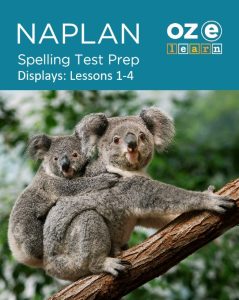
Teaching Resources
Australian Curriculum Content Descriptions
Overview
The NAPLAN Spelling program is a program for Year 3 and Year 5 students. It aligns to the Australian Curriculum English Strand:
- Recognise and know how to write most high frequency words including some homophones (ACELA1486).
- Understand how to use letter-sound relationships and less common letter patterns to spell words (ACELA1485).
- Know how to use common prefixes and suffixes, and generalisations for adding a suffix to a base word (ACELA1827).
- Understand how to apply knowledge of letter-sound relationships, syllables, and blending and segmenting to fluently read and write multisyllabic words with more complex letter patterns (ACELA1826).
- Understand how to use phonic knowledge to read and write less familiar words that share common letter patterns but have different pronunciations (ACELA1829).
- Understand how to use knowledge of known words, base words, prefixes and suffixes, word origins, letter patterns and spelling generalisations to spell new words (ACELA1513).
- Explore less common plurals, and understand how a suffix changes the meaning or grammatical form of a word (ACELA1514).
Learning Objectives
In In Lessons 1 to 15, students learn about:
- homonyms – right, write, ate, eight, blue, blew, knew, new, flour, flower, whole, hole
- morphographic rules
- identify which oi/oy sound letters to use to spell a word
- dropping the final e
- identify which ou/ow sound letters to use to spell a word
- doubling the final letter when adding a new morphograph.
Success Criteria
- Use knowledge of letter-sound relationships including consonant and vowel clusters and high-frequency words to spell words accurately.
Writing
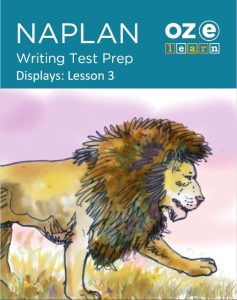
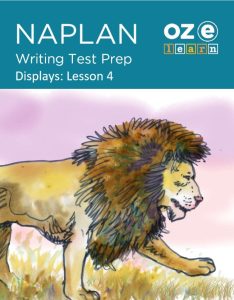
Australian Curriculum Content Descriptions
Overview
The NAPLAN Writing program is a program for Year 3 and Year 5 students. It aligns to the Australian Curriculum English Strand:
- Examine how evaluative language can be varied to be more or less forceful (ACELA1477).
- Understand how different types of texts vary in use of language choices, depending on their purpose and context (for example, tense and types of sentences) (ACELA1478).
- Understand that paragraphs are a key organisational feature of written texts (ACELA1479).
- Understand that a clause is a unit of grammar usually containing a subject and a verb and that these need to be in agreement (ACELA1481).
- Understand that verbs represent different processes, for example; doing, thinking, saying, and relating and that these processes are anchored in time through tense (ACELA1482).
- Create imaginative texts based on characters, settings and events from students’ own and other cultures using visual features, for example perspective, distance and angle (ACELT1601).
- Create texts that adapt language features and patterns encountered in literary texts, for example characterisation, rhyme, rhythm, mood, music, sound effects and dialogue (ACELT1791).
- Identify and explain characteristic text structures and language features used in imaginative, informative and persuasive texts to meet the purpose of the text (ACELY1701).
- Plan, draft and publish imaginative, informative and persuasive print and multimodal texts, choosing text structures, language features, images and sound appropriate to purpose and audience (ACELY1704).
Learning Objectives
In Lessons 1 to 19, students learn about:
- writing sentences
- writing paragraphs
- the use of topic-specific vocabulary.
Success Criteria
- Understand how language features are used to link and sequence ideas.
- Understand how language can be used to express feelings and opinions on topics.
- Include writing and images in texts to express and develop, in some detail, experiences, events, information, ideas and characters.
- Create a range of texts for familiar and unfamiliar audiences.
- Demonstrate understanding of grammar and choose vocabulary and punctuation appropriate to the purpose and context of their writing.
Year 3 – Numeracy
Australian Curriculum Content Descriptions
Overview
The NAPLAN Year 3 Numeracy program is a program for Year 3 students. It aligns to the Australian Curriculum Mathematics Strand:
- Recognise, model, represent and order numbers to at least 10 000 (ACMNA052)
- Recognise, represent and order numbers to at least tens of thousands (ACMNA072)
- Model and represent unit fractions including 1/2, 1/4, 1/3, 1/5 and their multiples to a complete whole (ACMNA058)
- Apply place value to partition, rearrange and regroup numbers to at least 10 000 to assist calculations and solve problems (ACMNA053)
- Represent and solve problems involving multiplication using efficient mental and written strategies and appropriate digital technologies (ACMNA057)
- Represent and solve problems involving multiplication using efficient mental and written strategies and appropriate digital technologies (ACMNA057)
- Explore the connection between addition and subtraction (ACMNA029)
- Recognise and explain the connection between addition and subtraction (ACMNA054)
- Recall addition facts for single-digit numbers and related subtraction facts to develop increasingly efficient mental strategies for computation (ACMNA055)
- Recall multiplication facts of two, three, five and ten and related division facts (ACMNA056)
- Measure, order and compare objects using familiar metric units of length, mass and capacity (ACMMG061)
- Measure, order and compare objects using familiar metric units of length, mass and capacity (ACMMG061)
- Represent money values in multiple ways and count the change required for simple transactions to the nearest five cents (ACMNA059)
- Make models of three-dimensional objects and describe key features (ACMMG063)
- Describe the features of three-dimensional objects (ACMMG043)
- Create and interpret simple grid maps to show position and pathways (ACMMG065)
- Collect data, organise into categories and create displays using lists, tables, picture graphs and simple column graphs, with and without the use of digital technologies (ACMSP069)
- Interpret and compare data displays (ACMSP070)
- Identify questions or issues for categorical variables. Identify data sources and plan methods of data collection and recording (ACMSP068)
- Conduct chance experiments, identify and describe possible outcomes and recognise variation in result (ACMSP067)
Learning Objectives
In Lessons 1 to 40, students learn about:
- Place Value: 5 and 6-Digit Numbers 1–14
- Money: Value of Groups/ Bills and Coins 1–2
- Place Value: Number Comparisons 1–3
- Fraction Analysis 1–7, 25–26
- Number Patterns/Lines 5–16, 20–21
- Division Sign and Word Problems 7–9
- Vocabulary: Product, Sum, Difference 10–14
- Tables 11–20
- Bar Graphs 15–23
- Polygons 15–18
- Comparison of Perimeters 17–20
- Probability 19–23
- Faces, Vertices, Edges 21–31
- Multi-Step Word Problems 22–25, 29–31, 36–38
- Place Value Grids 24–29
- Picture Graphs 24–32
- Circular Thermometer 27–28
- Fraction Number Lines 30–38
- Area: Full Unit/Half Unit 31–37
- Congruence 32–35
- Pattern of Shapes 37–40
- Symmetry 38–40
- Measure to Nearest Centimetre
Success Criteria
- Understand Place Value of numbers up to 6 digits
- Calculate with money
- Understand fractions
- Interpret, create and analyse graphs
- Solve addition, subtraction, multiplication and division problems
- Identify polygons, patterns and symmetry of shapes
- Measure to the nearest centimetre
Year 5 – Numeracy
Australian Curriculum Content Descriptions
Overview
The NAPLAN Year 5 Numeracy program is a program for Year 5 students. It aligns to the Australian Curriculum Mathematics Strand:
- Compare and order common unit fractions and locate and represent them on a number line (ACMNA102)
- Investigate strategies to solve problems involving addition and subtraction of fractions with the same denominator (ACMNA103)
- Solve problems involving multiplication of large numbers by one- or two-digit numbers using efficient mental, written strategies and appropriate digital technologies (ACMNA100)
- Use efficient mental and written strategies and apply appropriate digital technologies to solve problems (ACMNA291)
- Solve problems involving division by a one digit number, including those that result in a remainder (ACMNA101)
- Use efficient mental and written strategies and apply appropriate digital technologies to solve problems (ACMNA291)
- Find unknown quantities in number sentences involving multiplication and division and identify equivalent number sentences involving multiplication and division (ACMNA121)
- Choose appropriate units of measurement for length, area, volume, capacity and mass (ACMMG108)
- Calculate perimeter and area of rectangles using familiar metric units (ACMMG109)
- Estimate, measure and compare angles using degrees. Construct angles using a protractor (ACMMG112)
- Connect three-dimensional objects with their nets and other two-dimensional representations (ACMMG111)
- Use a grid reference system to describe locations. Describe routes using landmarks and directional language (ACMMG113)
- Describe translations, reflections and rotations of two-dimensional shapes. Identify line and rotational symmetries (ACMMG114)
- Construct displays, including column graphs, dot plots and tables, appropriate for data type, with and without the use of digital technologies (ACMSP119)
- Describe and interpret different data sets in context (ACMSP120)
Learning Objectives
In Lessons 1 to 20, students learn about:
- Pattern Numbers
- Word Problems
- Graphs
- Fractions
- Faces, vertices, edges of shapes
- Area, Perimeter, Volume
- Time word problems
- Transformations (rotation, translation, reflection)
- Angles
- Probability
- Symmetry
Success Criteria
- Describe, interpret and continue number patterns
- Use addition, subtraction, multiplication and division to solve word problems
- Calculate time problems
- Understand fractions
- Interpret, create and analyse graphs
- Identify symmetry of shapes and transformations of shapes
- Calculate Area, Perimeter and Volume
- Calculate probability
- Measure angles
Other Units
Lesson Design
Lesson Objective
Success Criteria
Activating Prior Knowledge
I Do
We Do
Apple Question
You Do
Revise
Professional Learning
